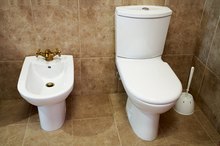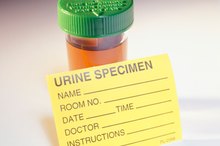A Diagnosis of an Infection of the Urinary Tract & Lactobacillus
Lactobacillus is a rod-shaped bacterium that is the part of the normal flora of the human genitourinary and digestive tracts but may cause urinary tract infections, UTI, in individuals with reduced immunity. However, the diagnosis of lactobacillus UTI is often challenging as this bacterium commonly occurs as a contaminant in the urine samples of many patients, especially women. Repeated isolation of the bacteria in the laboratory is essential confirm the diagnosis.
Clinical Sample
The clinical specimen for all suspected cases of UTIs is a clean catch, early morning urine sample. Since the first part of the urine tends to flush out urethral contaminants, a mid-stream urine sample is collected in a screw-capped, sterile plastic bottle.
If lactobacilli are isolated from the urine sample, a repeat test is ordered to rule out contamination and to confirm true lactobacillus infection. An article published in the November 1999 issue of "Nephrology Dialysis Transplantation" recommends direct aspiration of the urine sample from the urethra or the suprapubic region using a needle to rule out contamination in such cases.
- The clinical specimen for all suspected cases of UTIs is a clean catch, early morning urine sample.
- If lactobacilli are isolated from the urine sample, a repeat test is ordered to rule out contamination and to confirm true lactobacillus infection.
Urinalysis
What Does Positive Leukocytes Mean?
Learn More
Urinalysis is often the first test that is performed in a doctor's office to check for the presence of UTI and involves three steps 2. According to MedlinePlus, the first step involves visual examination of the urine sample for color and clarity. This is followed by a preliminary microscopic examination that detects the presence of pus cells, mucus and other substances. The third step is a chemical analysis that involves dipping a special stick coated with chemicals into the urine sample. These chemicals change color when they encounter substances of interest such as glucose or creatinine. If the urinalysis reveals anything suspicious, the patient's sample is sent to the laboratory for further testing 2.
Microscopy
A small amount of the urine sample is placed on a glass slide, stained with dyes such crystal violet and basic fuchsin and observed under the microscope. According to "Mackie and McCartney's Manual of Practical Medical Microbiology," the presence of purple-colored, rod-shaped bacteria provides a preliminary diagnosis of lactobacilli 3.
Culture
What Causes Epithelial Cells in a Urinalysis?
Learn More
A small amount of the urine sample is placed on growth medium plates, which consist of gels that promote the growth of the bacteria. The plates are then incubated at 37 degrees Celsius for 18 hours. The presence of bacterial colonies on the plates indicates infection. The colonies are then confirmed to be lactobacilli using an array of biochemical tests such as gas chromatography.
- A small amount of the urine sample is placed on growth medium plates, which consist of gels that promote the growth of the bacteria.
Significant Bacteriuria
In case of lactobacilli and other contaminating commensals, the proof of a UTI requires the demonstration that the bacteria is present in the urine in numbers greater than those likely to result from contamination. Mackie and McCartney's Manual of Practical Medical Microbiology states that the presence of significant number of bacteria in the urine is known as significant bacteriuria and is indicated by the presence of greater than 100,000 bacteria/ml of urine 3.
Antimicrobial Assays
Antimicrobial assays are performed to identify the antibiotic susceptibility pattern of the strain of lactobacilli that is causing the UTI. A small amount of the bacterial culture is placed on a growth medium plate, and paper discs impregnated with antibiotics are placed on it. The plates are then incubated. The absence of growth around a disc indicates that the lactobacilli are susceptible to that particular antibiotic.
- Antimicrobial assays are performed to identify the antibiotic susceptibility pattern of the strain of lactobacilli that is causing the UTI.
Related Articles
References
- "Nephrology Dialysis Transplantation"; Common errors in diagnosis and management of urinary tract infection; I: Pathophysiology and diagnostic techniques; Martina Franz and Walter H. Hörl; November 1999.
- Medline Plus: Urinalysis
- "Mackie and McCartney's Manual of Practical Medical Microbiology"; J. G. Collee, A. G. Fraser, B. P. Marmion and A. Simmons; 1996.
- KidsHealth from Nemours. Urine test: Automated dipstick urinalysis.
- Pallin, D.; Ronan, C.; Montazeri, K. et al. Urinalysis in Acute Care of Adults: Pitfalls in Testing and Interpreting Results. Open Forum Infect Dis. 2014: 1(1): ofu019. DOI: 10.1093/ofid/ofu019.
- Cleveland Clinic. Urinalysis. Updated July 2018.
- Park S, Lee S, Lee A, et al. Preoperative dipstick albuminuria and other urine abnormalities predict acute kidney injury and patient outcomes. Surgery. 2018;163(5):1178-1185. doi:10.1016/j.surg.2017.12.002
- MedlinePlus. Urinalysis. Updated February 2019.
- MedlinePlus. Urine 24-hour volume. Updated July 2017.
- MedlinePlus. Urinary catheters. Updated January 2019.
- Witte EC, Lambers heerspink HJ, De zeeuw D, Bakker SJ, De jong PE, Gansevoort R. First morning voids are more reliable than spot urine samples to assess microalbuminuria. J Am Soc Nephrol. 2009;20(2):436-43. doi:10.1681/ASN.2008030292
- KidsHealth from Nemours. Urine test: Automated dipstick urinalysis.
- Cleveland Clinic. Blood sugar tests.
- UCLA Health. Complete urinalysis. Updated June 2018.
- Revollo JY, Lowder JC, Pierce AS, Twilla JD. Urine discoloration associated with metronidazole a rare occurrence. J Pharm Technol. 2014;30(2):54–56. doi:10.1177/8755122513500921
- Cleveland Clinic. Urine changes. Updated January 2020.
- Cavanaugh C, Perazella MA. Urine sediment examination in the diagnosis and management of kidney disease: Core curriculum 2019. Am J Kidney Dis. 2019;73(2):258-272. doi:10.1053/j.ajkd.2018.07.012
- MedlinePlus. Clean catch urine sample. Updated January 2018.
- UK National Health Service. How should I collect and store a pee (urine) sample?. Updated August 2019.
- KidsHealth from Nemours. Urine Test: Routine Culture.
- MedlinePlus. Urine - abnormal color. Updated July 2019.
- Urology Care Foundation of the American Urological Association. The meaning behind the color of urine. Updated August 2018.
- Al-badr A, Al-shaikh G. Recurrent urinary tract infections management in women: A review. Sultan Qaboos Univ Med J. 2013;13(3):359-67. doi:10.12816/0003256
- Vaginal infections. Girls Health. US Department of Health and Human Services. Updated May 2014.
- Parnham A, Serefoglu EC. Retrograde ejaculation, painful ejaculation and hematospermia. Transl Androl Urol. 2016; 5(4): 592–601. doi:10.21037/tau.2016.06.05
- Najeeb S, Munir T, et al. Comparison of urine dipstick test with conventional urine culture in diagnosis of urinary tract infection. J Coll Physicians Surg Pak. 2015;25(2):108-10. doi: 02.2015/JCPSP.108110
- Ko DH, Jeong TD, Kim S, et al. Influence of vitamin C on urine dipstick test results. Ann Clin Lab Sci. 2015;45(4):391-5.
- Foley KF, Wasserman J. Are unexpected positive dipstick urine bilirubin results clinically significant? A retrospective review. Lab Med. 2014;45(1):59-61. doi:10.1309/lml85xx1qbercirn
- Delanghe J, Speeckaert M. Preanalytical requirements of urinalysis. Biochem Med (Zagreb). 2014;24(1):89-104. doi:10.11613/BM.2014.011
- American Urological Association. Diagnosis, Evaluation and Follow-up of Asymptomatic Microhematuria (AMH) in Adults (2016).
- MedlinePlus. Glucose in urine test. Updated February 2020.
- Hiorns MP. Imaging of the urinary tract: the role of CT and MRI. Pediatr Nephrol. 2011;26(1):59-68. doi:10.1007/s00467-010-1645-4
- American Cancer Society. Tests for bladder cancer. Updated January 2019.
- College of American Pathologists. (2016) CAP Accreditation Program: Urinalysis Checklist. Northfield, Illinois: College of American Pathologists.
- Pallin, D.; Ronan, C.; Montazeri, K. et al. Urinalysis in Acute Care of Adults: Pitfalls in Testing and Interpreting Results. Open Forum Infect Dis. 2014: 1(1): ofu019. DOI: 10.1093/ofid/ofu019.
Writer Bio
A freelance writer and blogger since 2007, Shamala Pulugurtha's work has appeared in magazines such as the "Guide to Health and Healing" and prominent websites like Brain Blogger and NAMI California. Pulugurtha has a postgraduate degree in medical microbiology from Manipal Academy of Higher Education, India and has completed course work in psychology and health education.





